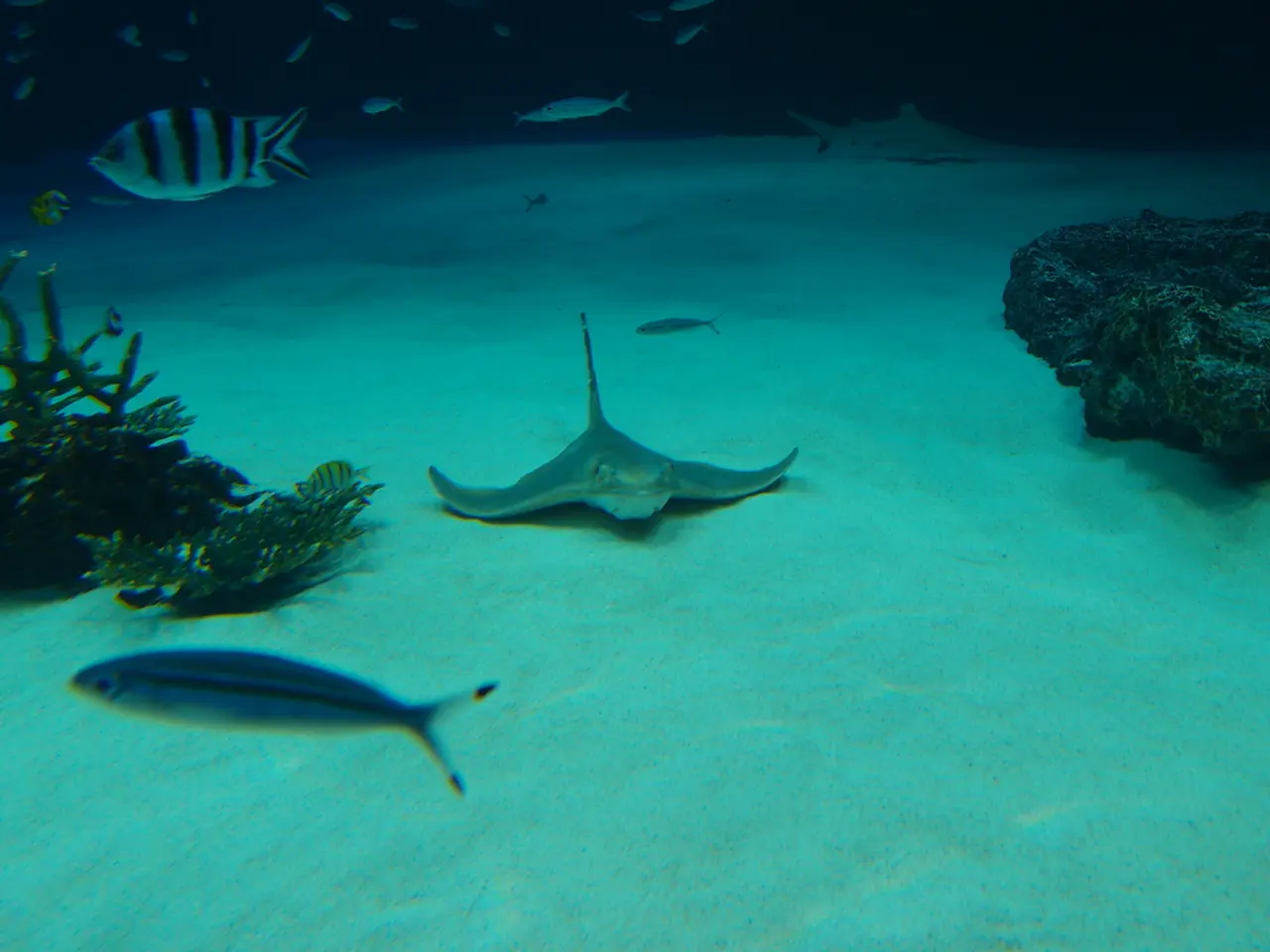Initiative to Minimize Microfibers Pollution in the Ocean: Focusing on Addressing the Source of the Problem
In the heart of Venice, the international campaign "Only One: One Planet, One Ocean, One Health" took a significant stride with the launch of the #stopmicrofibers initiative. This campaign, spearheaded by Marevivo, Marina Militare, and Fondazione Dohrn, aims to reverse the trend of microfiber concentrations in the sea and oceans.
Microfibers, tiny fragments from synthetic textiles, are a major source of microplastic pollution in our waterways. In fact, textile waste produces over 170% more artificial fibers than natural fibers, exacerbating microplastic contamination. These microfibers end up in the sea, where they are ingested by marine organisms, entering our food chain.
The production of microfibers reached an astounding 120 million tons in 2019. A third of the 13 million tons of plastic that end up in the seas annually comes from microfibers released during clothing washing. A load of laundry produces between 6 and 17 million microfibers, painting a concerning picture of the scale of this issue.
The ingestion of microfibers by marine species can exceed 90% of the organisms analyzed. The effects of microfibers are proving to be serious for these organisms. However, while the #stopmicrofibers campaign raises awareness and promotes practical actions to reduce microfiber pollution, there is currently no publicly documented, robust evidence demonstrating its direct impact on reducing microfiber pollution in marine ecosystems.
The campaign's effectiveness would depend on multiple factors such as consumer behavior change, manufacturer compliance, and wastewater treatment improvements, which require targeted monitoring and long-term studies. Nevertheless, the campaign contributes to increased awareness and some industry momentum against microfiber pollution.
Supporting the campaign is Beko, a company that recognizes the urgency of addressing this issue. As emphasized by Raffaella Giugni, Marevivo aims to push forward the #stopmicrofibers campaign. According to Francesco Regoli, the pollution from plastics and microplastics is an emergency affecting all the seas and oceans of the world.
Microfibers are found in all seas with concentrations ranging from 1 fiber per 50 liters to over 25 fibers per liter of water. The campaign aims to reduce the presence of microfibers in the sea and oceans, making a difference for the health of our marine ecosystems.
Public concern about microplastic pollution is widespread, and there is bipartisan support for practical solutions like filters that capture microfibers from wastewater and air. Industry and advocacy groups view microfiber reduction as both an environmental challenge and an opportunity for product innovation. Campaigns like #stopmicrofibers often urge companies to prohibit microbeads, improve filter technologies, and innovate textile design to reduce microfiber shedding.
As we continue to fight against microplastic pollution, the #stopmicrofibers campaign serves as a beacon of hope, pushing for change and raising awareness about this critical issue. While the direct effects of the campaign may not yet be fully quantified, its contributions to increased awareness and industry momentum are undeniable.
- The international campaign "Only One: One Planet, One Ocean, One Health," currently active in Venice, also extends its focus to the reduction of microfiber pollution in the environment, as initiated by the #stopmicrofibers movement.
- The involvement of Beko, a company committed to addressing microplastic pollution, signifies a significant stride in the global effort to combat the issue, particularly within the realms of environmental science and international science.
- As part of a broader lifestyle shift aimed at preserving our home and garden—our planet—more individuals and businesses are embracing the call to action issued by campaigns like #stopmicrofibers, set to make a substantial difference in the fight against microplastic pollution.




